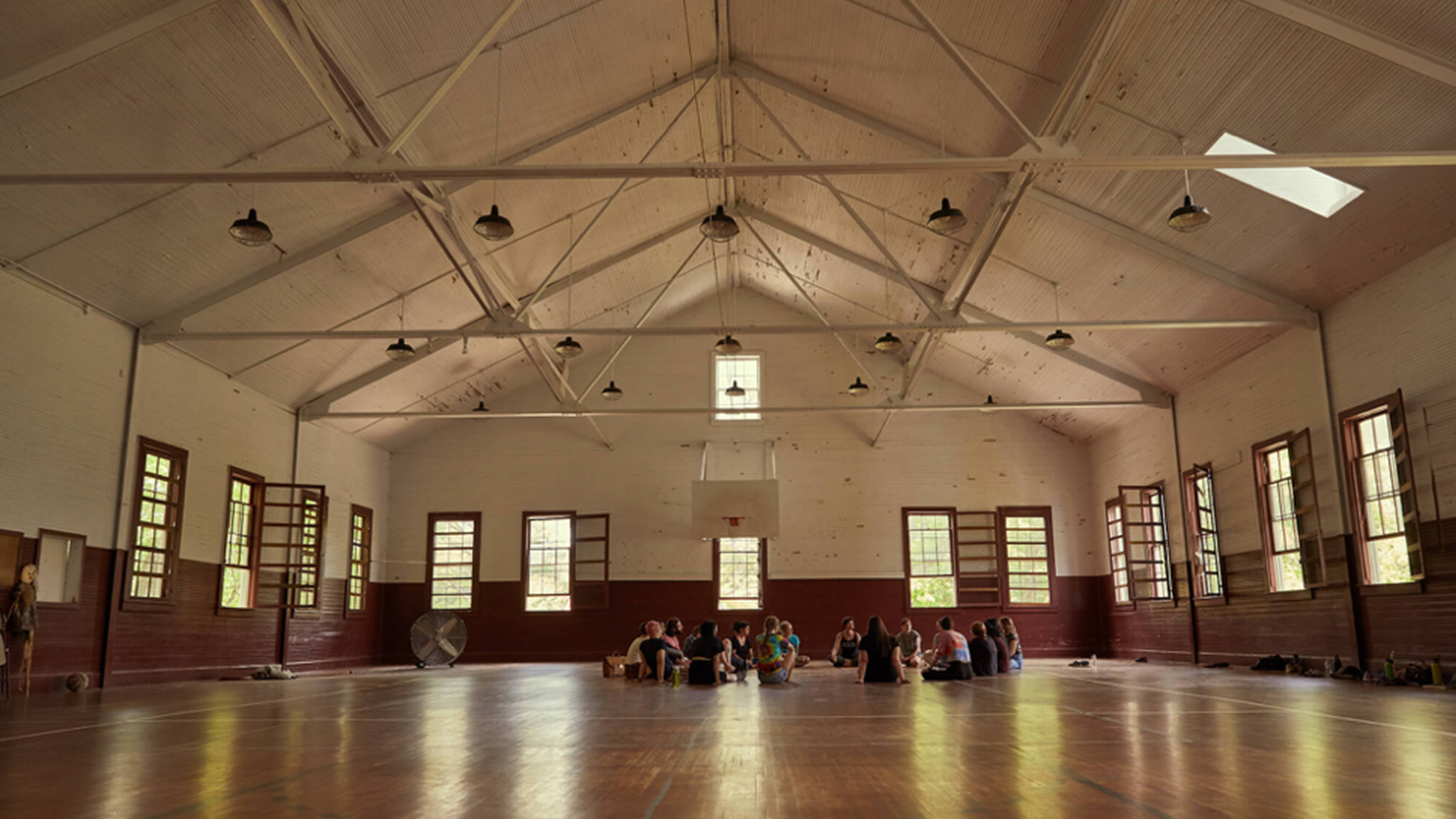
This past May, I travelled to Black Mountain, North Carolina in order to participate in the annual session of the School of the Alternative (SotA.) Located on the original campus of the Black Mountain College, SotA, an annual non-profit event/community describes itself as “an experiment in education and community aiming to provide a passion-driven model of education that encourages greater possibilities for thought, creation and collective action.” Here among rolling appalachian mountains, I joined other artists, students, and educators in a week of teaching, learning, collaborating, and community.
The workshop I was invited to facilitate is titled How to Critique Towards Love. Its curriculum grew out of my ongoing research into modes of articulating art making, and all of my previous experiences as a student and teacher in art education. Specifically, the form of articulation which we explored at SotA was the typical group critique.
During warm, breezy afternoon sessions, I facilitated conversations among participants from a diverse array of experiences, from students preparing to begin their undergraduate educations to professors who have been teaching for decades. Our conversations grew out of our experiences with and aspirations for participating in the art school critique format, and lead towards proposals for how these critiques could be executed with greater equity, efficacy, and compassion in and out of the institution.

We sketched new experimental structures for organizing these group conversations, and put some to the test on samples of our own work and objects produced in others’ concurrent SotA workshops. We aimed at guiding critique conversations towards productive starting points, rather than conclusive evaluations, by focusing our conversations around questions rather than statements. We injected some humorous devil’s-advocate character role playing as a way to make all participants comfortable in expressing even the most out-of-place commentary.
In addition to many conversations about art, community, and pedagogy with all of the other participants, I was invited to participate in all the other ongoing classes, in exchange for facilitating my own. I visited classes on ‘experimental genre-specific short filmmaking’ on ‘radical softness as a weapon’ and on ‘how ridiculous titles and public life are, and the mythic perks of fame.’ All the full class descriptions can be found on SotA’s website.
Additionally, we were privileged to visit North Carolina’s Western Regional Archives which maintains an extensive collection of material on the Black Mountain College. Here I viewed transcripts of interviews and teaching contracts with famed black mountain faculty, documentation of classes in session, and one great picture of a geodesic dome birthday cake made for Buckminster Fuller.
Though it was an abbreviated visit, I was thrilled to have SotA as a welcoming place to revisit and experiment with working as an educator in a discussion-based setting rather than in a studio class. I’m thankful to have had the opportunity to test out my workshop among peers and excited to continue searching for venues for its reiteration and growth.
–Max Spitzer MFA ’21




